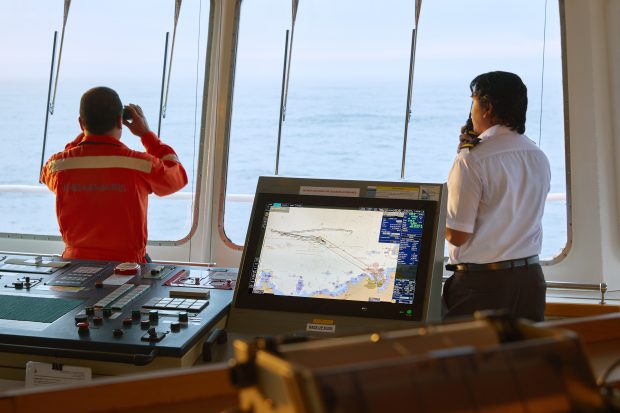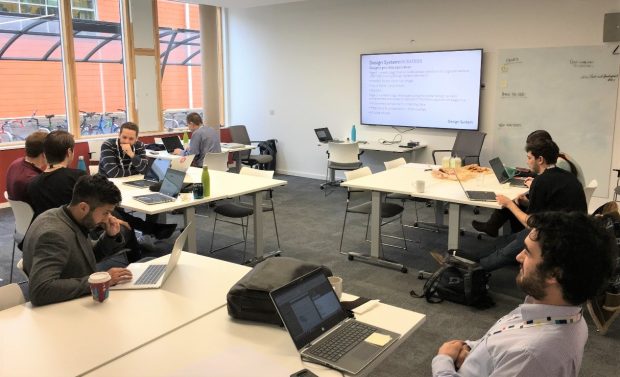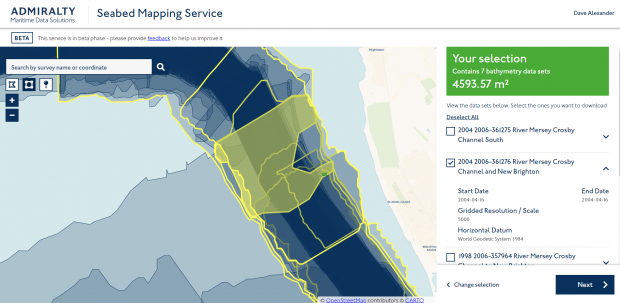For over 225 years, mariners have relied upon our navigational charts – and the UKHO’s expertise has built global renown. But as the needs of users are continuing to evolve, so is our approach to delivering data, products and services.

Hydrographic offices and organisations across the globe provide the tools and information needed to navigate the world’s oceans, and over the years, the use of these tools has created established and recognised ‘mental models’ for users at sea.
However, the maritime industry is changing. Over the past years, we have seen improved connectivity at sea, continuing innovation in the autonomous vessels sector, and even greater volumes of data to drive decision-making for mariners and shore-based users alike. This means that we, too, are having to evolve our approach to developing products, services and solutions – putting users’ needs at the heart of our decisions.
Our UX journey so far
Our journey towards providing a more positive experience for our users began with our early adoption of user research.
By engaging with mariners and wider user groups, we have been able to gain true insight into their planning decisions, their experiences on-board vessels, and the ways in which ADMIRALTY products and services are being used in context. This research has included field studies aboard vessels, engagement with mariners at training colleges, as well as engagement with wider sector organisations who are moving towards improved user experience (UX) at sea – all of which have helped us mature as an organisation.
The next step was to grow our UX function to include a design team – responsible for making our products and services intuitive, fit-for-purpose and enjoyable to use. This enabled solid progression in the way we could action some of the UX improvements identified through our rigorous research.
Part of this included the implementation of our UKHO Design System, which facilitated a cultural change in the way developer teams across the organisation built our various solutions. By providing a set of common components approved for our user groups, this enabled iteration and ultimately reduced sprint time.
A team of designated developers called ‘UX Champions’ now own this design system, redesigning the deployment and, as a result, learning more about the link from UX to User Interface (UI) in their own builds.

Applying what we’ve learned
A notable milestone in our UX maturity has been the recent launch of our Beta Seabed Mapping Service, made available via our ADMIRALTY Marine Data Portal. Created in response to user requirements for increased access to our seabed mapping data, the service provides access to extensive bathymetry holdings for the UK.
To meet the needs of users, we designed the solution using Lean UX and Agile principles – progressing from prototype to Beta, while learning as a wider team as we went. We brought our Scrum team into testing with end users, taking a collaborative approach to designing the user journey, then tested our iterations with end users until we were ready to launch a Beta service. This approach not only enhanced our internal processes for developing new solutions but has resulted in a service that is aligned to user needs, providing valuable analytics and metrics that we can use in context for future improvements.
By working closely with the Product Management team, we have been able to place user needs at the foreground and make more robust, strategic decisions around our offering – particularly in evolving how we provide data to our end users.

Responding to this increased demand for and provision of data for our end users in making navigation solutions and decisions is another area where we can make effective decisions for an optimal user experience.
In line with the IHO’s S-100 Data Framework, we have recently launched a number of trial data sets for S-100 data, including S-100 (Electronic Navigational Charts) and S-102 (Bathymetric Surface). By launching this trial data, we are looking to gain a better understanding of user requirements as part of our ongoing user research into the ways these new standards will support users on shore and at sea.
This is underpinning an improved culture of user engagement as we anticipate major changes across our industry.
Championing UX through collaboration
As well as improving the UX of our own products and services, our teams have also been able to support other organisations in the development of user-centred product propositions as part of our ADMIRALTY Marine Innovation Programme.
Launched in 2020, the initiative supports innovators and start-ups in developing new solutions to solve some of the world’s most pressing challenges that face our oceans, from supporting autonomous vessels to offshore renewable energy. Key to this was helping teams turn their initial ideas into innovative product propositions.
To do so, our Research, Design and Innovation team worked closely with external participants across Design Sprints to support the development of their solutions using UKHO data. By applying design thinking, we were able to coach and facilitate the teams to design and develop their prototype, which could then be qualitatively tested with target users:
- Empathise – We began the sprint focusing around a core user's problem that enabled a confident 'Problem Statement' and visible personas to be developed
- Define – We then helped refine the concept using techniques such as the '5 Whys' and mapping the user journey
- Design – From the users' intended goals, we could then build a storyboard and begin wireframing, subsequently developing higher fidelity prototypes
- Test – Companies could then test working prototypes with users just 4 days after establishing a need and possible solution
We received fantastic feedback from participants. All found the process and competition useful, and we are now working with challenge winners BMT and Marico Marine to build on this user-centred design approach to the use of our data in the autonomous navigation and offshore renewables space, respectively.
Looking ahead
Understanding our user groups has been pivotal to the wider maturity of the business.
By building user personas with our subject matter experts, using design sprints to scope products in pre-development stages with our stakeholders, and making our users more visible in our own internal communications, we are developing a more user-centred approach. As we mature this, we are adapting our culture to meet the changing needs of our users, customers and partners.
Looking optimistically to a future of greater digitalisation, innovation and autonomy, we aim to continue our approach to UX to ensure our data, products and services are truly meeting the needs of those who depend upon them.